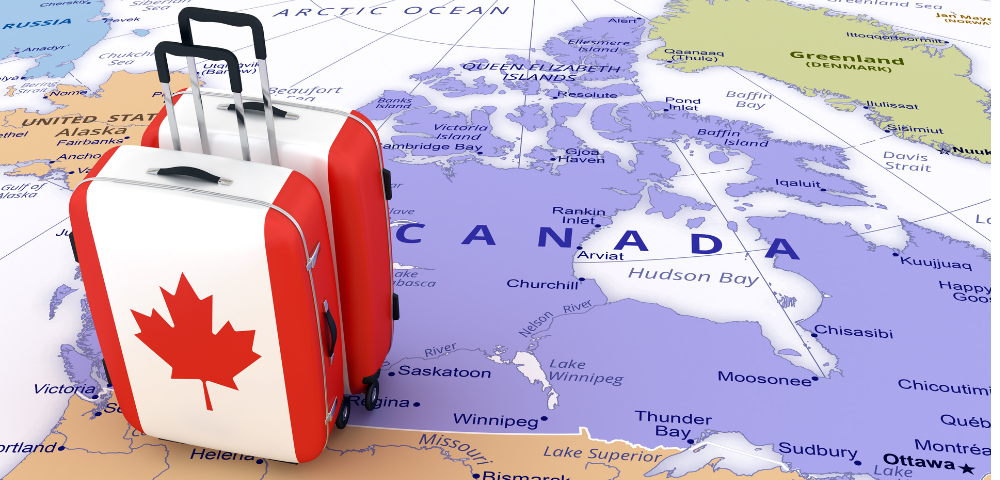The Easiest Route for Foreign Applicants to Work in Canada or the UK.
Let’s be honest — the idea of working in Canada or the UK has probably crossed your mind more than once. It’s not just about better pay or a cleaner environment; it’s about opportunity. The thought of building a new life, meeting new people, and experiencing a work culture that truly values skill and effort is incredibly appealing.
But here’s the thing most people won’t tell you: the path to working abroad isn’t as complicated as it sounds. It takes effort, yes, but it’s not impossible. There are legal, structured, and even surprisingly simple routes that allow foreigners to work in Canada or the UK — whether you’re a fresh graduate, a skilled professional, or someone just starting your career.
Start a visa application today
In this article, I’ll break down the easiest and most realistic routes to getting a job and work visa in these two countries, while keeping things practical, honest, and human.
The Easiest Route for Foreign Applicants to Work in Canada or the UK
Why Canada and the UK Are Top Destinations
Both Canada and the UK are known for being immigrant-friendly, but for different reasons.
Canada has one of the most open immigration systems in the world. It actively encourages skilled workers to apply because its economy depends on international talent. The country faces labor shortages in many sectors — healthcare, agriculture, IT, logistics, and construction — so foreign applicants are always in demand.
The UK, on the other hand, has become more intentional about skilled immigration since it introduced the points-based visa system. Employers in sectors such as healthcare, engineering, finance, and education often sponsor work visas for qualified foreigners. The UK offers professional stability, a diverse environment, and a clear career growth structure for those who qualify.
Both countries offer pathways that lead not just to temporary employment but to permanent residency — if you plan strategically.
The Easiest Route: Employer-Sponsored Work Visas
Let’s start with what’s arguably the simplest and most reliable route — getting a job offer from an employer willing to sponsor your work visa.
For Canada: The Temporary Foreign Worker Program (TFWP)
This program allows Canadian employers to hire foreign workers when no local candidates are available. Jobs under the TFWP often include positions in:
- Hospitality and food services
- Agriculture and farm work
- Caregiving
- Construction and trade-related jobs
- Manufacturing and logistics
Once you receive a valid job offer, your employer applies for a Labour Market Impact Assessment (LMIA) — basically, government approval to hire a foreign worker. After that, you can apply for your work permit, which lets you legally live and work in Canada.
Some employers even offer free accommodation, relocation assistance, and visa sponsorship.
This route is especially beginner-friendly because it doesn’t always require a degree or high-level experience — just the right attitude, willingness to work, and basic qualifications.
For the UK: The Skilled Worker Visa Route
The UK’s Skilled Worker Visa (previously called the Tier 2 visa) is one of the most straightforward ways for foreigners to work there.
To qualify, you need:
- A job offer from a licensed UK sponsor (employer)
- A Certificate of Sponsorship (CoS) from that employer
- A role that meets the required skill and salary level
Jobs that often come with sponsorship include healthcare, engineering, IT, education, and logistics. Many employers list their openings on websites such as the UK Government’s “Find a Job” platform, Indeed, or LinkedIn.
Once your visa is approved, you can work in the UK for up to five years, after which you may apply for indefinite leave to remain (permanent residency).
Other Viable Routes to Consider
While employer sponsorship is the easiest, it’s not the only path. Depending on your background, a few other routes might fit you better1. The Study-Work Route
One of the most popular ways to work abroad long-term is to study first, then transition into work.
Both Canada and the UK allow international students to work part-time while studying and full-time after graduation. Once you complete your studies, you can switch to a post-graduate work permit or a work visa.
- In Canada, the Post-Graduation Work Permit (PGWP) allows graduates to work for up to 3 years.
- In the UK, the Graduate Route Visa gives you 2 years (or 3 for PhD holders) to stay and work after your studies.
This path might cost more upfront, but it’s one of the surest ways to secure long-term employment abroad.
2. The Express Entry System (Canada)
If you’re a skilled professional, Canada’s Express Entry program is worth exploring. It’s a points-based immigration system that evaluates your:
- Age
- Education
- Work experience
- English/French proficiency
- Adaptability
You don’t need a job offer to apply, but having one increases your chances. If you’re selected, you receive permanent residency (PR) — meaning you can live and work anywhere in Canada without needing a separate work visa.
3. Temporary or Seasonal Work Programs
Both countries run short-term programs that allow foreigners to work temporarily, often in agriculture, hospitality, or tourism.
- Canada’s Seasonal Agricultural Worker Program (SAWP) is open to many nationalities.
- The UK Seasonal Worker Visa lets you work for up to 6 months, mainly in farms and greenhouses.
These roles are a good way to gain international experience, save money, and build professional connections for future long-term opportunities.
How to Improve Your Chances of Getting Hired
Even when a country welcomes foreign workers, the competition is still tough. Here’s how you can stand out:
- Tailor your resume for international employers. Highlight your relevant skills, education, and work ethic. Keep it concise and professional.
- Apply through verified platforms. Always use official government websites or reputable job boards. Avoid shady offers that sound too good to be true.
- Get your documents ready. This includes your passport, credentials, language test results (IELTS or TOEFL), and references.
- Show your willingness to relocate. Employers want to know you’re serious about moving abroad — mention your flexibility in interviews or cover letters.
- Stay proactive. Follow up on applications and connect with recruiters on LinkedIn. Persistence pays off.
Common Misconceptions About Working Abroad
Let’s clear up a few myths that often discourage people from applying:
- “You need years of experience.” Not always true. Many employers train their new hires, especially for entry-level roles.
- “It’s only for people with degrees.” Again, false. There are visa pathways and jobs for skilled tradespeople, caregivers, and general workers too.
- “The process is too expensive.” While it costs money to process visas or travel, many employers and programs offer full or partial financial support.
- “Only locals get hired.” Both the UK and Canada face labor shortages in several sectors. They genuinely need foreign talent.
Final Thoughts
Working abroad isn’t just about finding a job; it’s about building a life — one filled with growth, independence, and new possibilities. The easiest route to making it happen is through employer sponsorship, but the key lies in preparation, patience, and persistence.
Whether you choose to apply directly for a sponsored job, study first, or explore seasonal work, every step you take brings you closer to that dream of living and working abroad.
The process may feel long, but every person who’s now thriving in Canada or the UK once stood exactly where you are — searching for that one clear, realistic route forward.
So, take that first step today. Research, apply, and stay consistent. The opportunity is real, and it’s waiting for someone just like you to seize it.










